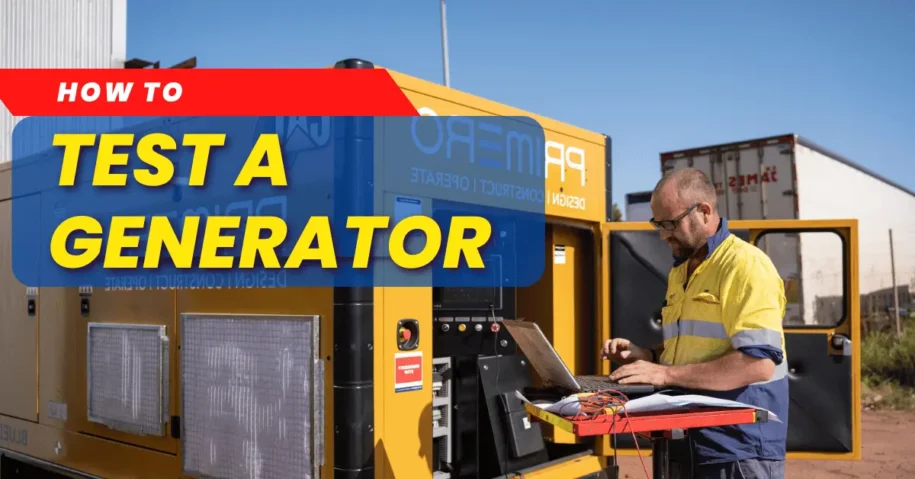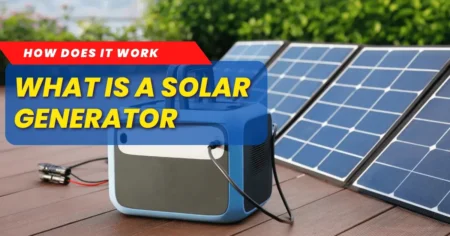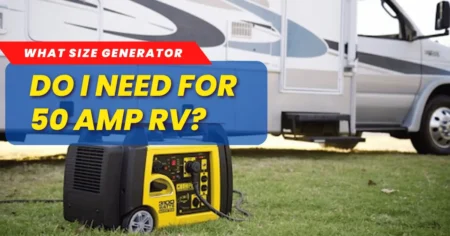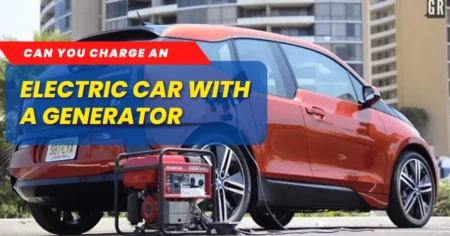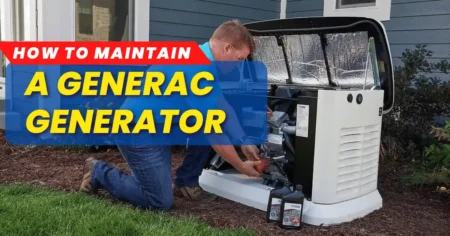Generators are crucial during emergencies, providing power when the main supply fails. Regular testing is essential to ensure your generator is ready to perform when needed. This guide will walk you through testing your generator to guarantee reliable performance.
How To Test A Generator: Safety First
Before you begin testing your generator, it’s vital to prioritize safety. Follow these essential safety tips:
- Read the User Manual: Familiarize yourself with the generator’s instructions and safety guidelines.
- Wear Protective Gear: Use gloves, goggles, and ear protection to safeguard yourself.
- Ensure Proper Ventilation: Operate the generator in a well-ventilated area to avoid inhaling harmful fumes.
- Keep Children and Pets Away: Ensure children and pets are not near the generator during testing.
Gather Your Tools
To test your generator effectively, you will need the following tools:
- Multimeter: This is used to measure voltage and ensure correct electrical output.
- Load Bank or Electrical Appliances: To simulate an actual load on the generator.
- Fuel Supply: Make sure you have enough gasoline, diesel, or propane, depending on your generator type.
- Oil and Coolant: Check and top up as necessary.
Check the Fuel and Oil Levels
Your generator needs sufficient fuel and oil to operate correctly. Follow these steps:
- Fuel Check: Ensure the fuel tank is full. Top up if required.
- Oil Check: Check the oil level and add more if it’s low. This will ensure smooth operation and prevent engine damage.
Inspect the Battery
For generators with batteries, follow these steps:
- Check for Corrosion: Inspect the battery terminals for any signs of corrosion. Clean them if necessary.
- Ensure Charge: Verify that the battery is fully charged. If it’s old or damaged, replace it to avoid starting issues.
Start the Generator
Starting the generator involves these steps:
- Turn Off Electrical Appliances: Make sure all connected appliances are turned off.
- Set to Start Mode: Set your generator to the “start” position.
- Start the Engine: Use the starter cord or press the start button. If it doesn’t start, recheck the fuel and oil levels.
Once started, let the generator run for a few minutes to stabilize.
Test the Voltage
Testing the generator’s voltage ensures it is producing the correct electrical output. Use a multimeter by following these steps:
- Set Multimeter to AC Voltage: Ensure the multimeter is set to measure AC voltage.
- Connect Probes to Output Terminals: Attach the multimeter probes to the generator’s output terminals.
- Read the Voltage: Check the voltage reading on the multimeter. It should match the generator’s rated output. If the voltage is too high or too low, seek professional assistance.
Load Test the Generator
Load testing is critical to ensure your generator can handle a real-world electrical load. Here’s how to perform a load test:
- Connect a Load Bank or Appliances: Attach a load bank or several electrical appliances to the generator.
- Gradually Increase the Load: Slowly add more load to the generator.
- Monitor Performance: Observe the generator’s performance under load. It should run smoothly without struggling or shutting down. If issues arise, maintenance may be needed.
Check the Exhaust System
The exhaust system is vital for removing harmful gases. Inspect it by:
- Checking for Leaks or Blockages: Ensure no leaks or blockages in the exhaust system.
- Proper Exhaust Direction: Ensure the exhaust is directed away from people and buildings.
- Cleaning or Replacing: Clean or replace any exhaust system parts if necessary.
Test the Generator’s Safety Features
Generators have built-in safety features to protect you and the equipment. Regularly test these features:
- Automatic Shut-Off: Ensure the generator shuts off automatically if it overheats or runs low on fuel.
- Ground Fault Circuit Interrupter (GFCI): Test the GFCI by pressing the “test” button to ensure it functions correctly.
If any safety features fail, contact a professional for repairs.
Record the Test Results
Keeping a detailed record of your generator tests is crucial. Note the date, voltage readings, load conditions, and any issues observed. This record will be helpful for future maintenance and troubleshooting.
Regular Maintenance Tips
Regular maintenance is vital to keeping your generator in optimal condition. Follow these tips:
- Change the Oil: Every 50-100 hours of use, change the oil to keep the engine running smoothly.
- Clean or Replace the Air Filter: Regularly check and maintain the air filter to ensure proper airflow.
- Inspect the Spark Plug: Replace it if it shows signs of wear.
- Check the Fuel System: Regularly inspect for leaks or blockages in the fuel system.
Frequently Asked Questions
What Tools Are Needed To Test A Generator? You will need a multimeter, a load bank, and a fuel supply to test your generator effectively.
How Do You Perform A Load Test? Connect your generator to a load bank and monitor its performance under different loads.
How Often Should Generators Be Tested? You should test your generator monthly to ensure it remains operational.
What Is A Multimeter Used For? A multimeter measures voltage, current, and resistance in electrical systems.
Conclusion
Regular testing and maintenance of your generator ensure it’s ready to perform during emergencies. Follow this guide to test your generator safely and effectively. Keeping your generator in good condition can prepare you for any power outage and ensure reliable performance when needed.
See From Us more Related:

